Making a Report
A safe childhood is an adult's responsibility. Report abuse if:

YOU SUSPECT ABUSE
You witness red-flag behaviors like a child's boundaries being crossed consistently, even without evidence of abuse

YOU DISCOVER ABUSE
You witness a child being abused, someone tells you about an incident, or you find photo/video evidence online.

A CHILD DISCLOSED ABUSE
A child reveals to you that they have experienced sexual abuse or are currently being abused.
To make a report, state laws require that you have reasonable suspicion that abuse is occurring. This means you do not need proof of sexual abuse to make a “good faith” report to authorities. Reasonable suspicion arises when there are observable signs, behaviors, or disclosures that lead a person to believe a child may be in danger.
Whether you are a mandated reporter or a concerned adult, by making a report, you are taking a pivotal step in protecting children and fostering a safer environment for all.

What is a good faith report?
A good faith report means that you have reasonable suspicion of abuse, including any of the following:
- You witnessed a pattern of boundary violations by an adult or youth.
- You intervened in boundary violations, and yet the person continues.
- You received a disclosure of abuse or boundary violation from a child.
- You see physical signs of abuse.
Before you report, take a few moments to jot down some notes in two categories:
What is the action, or failure to act, on the part of the parent or caregivers?
How are these actions or failures to act affecting and hurting the child?
What do I need to make a report?
Make your report immediately to child protective services or law enforcement and include:
- Name of the alleged victim
- Age of the child
- Address where the child can be located
- Contact information for the child’s parents or caregivers, if known
- Types of abuse or neglect suspected
- Reason for making the report, including specific signs of maltreatment and whether it is part of an ongoing pattern
- Other children in the home, if known
- Name of the alleged perpetrator, if known
- The emergency nature of the report and whether the child is in imminent danger
- Name, phone number, and address of the reporter
When known, the following should also be shared with child protective services:
- Exact time the child disclosed abuse, if there was a disclosure.
- Whether the perpetrator is aware of the report and whether the non-offending parent was notified of the report.
- Last occurrence of the offense.
What if I'm not sure? Where do I go?

Child Advocacy Centers (CAC)
CACs coordinate all the professionals (legal and social services) involved in a case. If you’re unsure about whether to make an official report or just need support, contact a child advocacy center. They will help you evaluate your suspicions. To find one near you, contact National Children’s Alliance at www.nca-online.org or 1-800-239-9950.

Child Abuse Helplines
Helplines have staff, specifically trained operators, to deal with questions about suspected child sexual abuse. Call the National Sexual Assault Hotline, 1-800-656-HOPE (4673) to be routed to resources in your own community, or call the ChildHelp USA National Child Abuse Hotline, 1-800-4-A-CHILD (800-422-4453)

